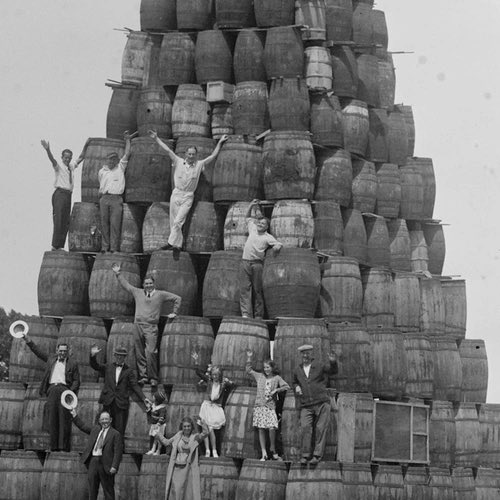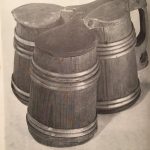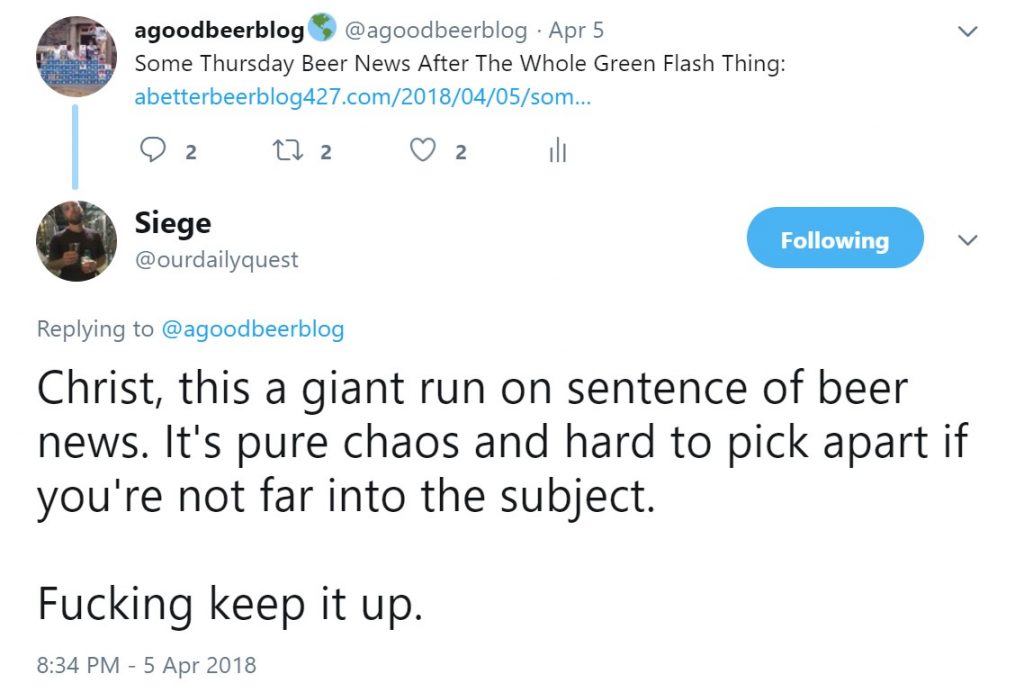 Can you believe late May and early June? I was so caught up with the darling buds of May on Tuesday morning, I even posted a third of this two days early. Significantly… no one cared. Anyway, that’s the life of a blogger two decades in. No time to fret. Summer is coming on soon. Last weekend, I got out the big hat and the SPF 50 and partook of a bit of rugger spectating and – I say I say – I shall do so again this week. Wha-hey! Look at that action. The eastern Ontario league games are free and, as you can see, the seats are good… as long as you remember to bring one. You don’t get as close as that gent in grey, mind you, but he was a linesman so there is that.
Can you believe late May and early June? I was so caught up with the darling buds of May on Tuesday morning, I even posted a third of this two days early. Significantly… no one cared. Anyway, that’s the life of a blogger two decades in. No time to fret. Summer is coming on soon. Last weekend, I got out the big hat and the SPF 50 and partook of a bit of rugger spectating and – I say I say – I shall do so again this week. Wha-hey! Look at that action. The eastern Ontario league games are free and, as you can see, the seats are good… as long as you remember to bring one. You don’t get as close as that gent in grey, mind you, but he was a linesman so there is that.
First up in beer – because there was no beer tent at the field of play – very interesting news from Evan Rail and the publication of an anthology of the best of his his beer writing.
…until now, the old “Why Beer Matters” was never available in print, just on Kindle. (Yes, there was a limited-edition letterpress edition, but that doesn’t count.) This new print + ebook edition was made with the amazing @vellum180g. It looks great, if I do say so myself.
Many of the pieces he has included in the book speak from that era of optimism about good beer that existed before the buy-outs, the murk, the scandals, the fruit sauces and the closings. Very worthwhile and all excellently written. Buy it here.
Speaking of putting it all together, Matty Matt Meister 3000 has published a tale in Pellicle this week, a tale of an apple named Discovery:
You couldn’t possibly make proper cider with eating apples, I thought… I have since learned when it comes to any alcoholic beverage, this breed of snobbery gets you absolutely nowhere—all drinks are valid and have their place, after all.* And some of the best cider in the world is made using sweet, deliciously succulent eating apples. Chief among them: the noble Discovery. First cultivated in 1949, Discovery’s story began when Essex fruit worker George Dummer planted pips taken from the Worcester Pearmain variety in his garden, thought to be pollinated by another variety called Beauty of Bath. The tale goes that the young tree was left unplanted, and was exposed to frost, with only a light sack covering for protection. Fortunately it survived, and eventually came to the attention of Suffolk nursery keeper Jack Matthews, who took grafts of the tree and continued to develop the variety.
Note: unlike all drinks, all apples are valid and do have their place. White Claw and glitter beer are crap and you can’t even turn that shit into compost.
 Stats on the UK beer scene are something that Victim of Maths more than dabbles in as this week when he notes that off-trade booze prices have siggnificantly dragged behind inflation:
Stats on the UK beer scene are something that Victim of Maths more than dabbles in as this week when he notes that off-trade booze prices have siggnificantly dragged behind inflation:
The latest UK inflation data shows that in spite of continuing high levels of price increases in food and non-alcoholic drinks, prices of shop-bought alcohol, particularly wine and spirits, have not risen at anything like the same rate… you could speculate a few reasons: 1) We produce a lot of it domestically 2) Perhaps ingredients less affected by price increases 3) Ability of retailers/producers to stockpile due to long shelf life 4) Used as a loss leader.
Staying in Britain, The Times published an article on calories and booze and shared this interesting bit of metabolic prioritization info:
“Unlike protein, carbohydrates and fats, alcohol cannot be stored in the liver,” says Eli Brecher, a registered nutritionist. “Drinking large quantities results in your body prioritising the breaking down of alcohol over its other duties such as burning calories and the result is that your metabolism slows and calorie-burning is less efficient.”
Across the Channel, Boak and Bailey have been to Paris and have identified some key tips to navigating its beer bars, tips like this:
You wouldn’t cut towards the bar to greet the staff in a branch of Wetherspoon, though, before finding a table. In France, we’ve found, people will do exactly that, effectively announcing their arrival, and getting (quiet, possibly unspoken) permission to take a seat… Of course we got it wrong at craft beer bar FauveParis at 49 Rue St Sabin on our way out to Italy, while we were still warming up. We then spent 30 minutes trying to win over the staff whose feelings we had hurt. They wouldn’t look at us, talk to us or crack a smile because, fair enough, we’d rudely walked in and failed to greet them before looking at the beer list.
Not dissimilarly except it’s elsewhere, Martin is on the road again, this time in Estonia and Latvia with a series of posts (along with the usual generous accompaniment of excellent photos) that also unpack what you might expect if you found yourself there and thirsty such as these two observations in Riga:
Across the church square was Banshee, a brand new craft bar and another pre-emptive tick, which seemed to specialise in orange murk, a change from the sour obsession in Tallinn… And the local specialties of dumplings and blood sausage were worth the calories, though an impulse late order of dried fish and squid was a step into Estonian authenticity too far.
Closer to home, a great bit of vid was posted this week from here in Ontario where two beer fans report on the limited joys of that regulatory loophole that allows a 7 Eleven convenience store to be deemed a restaurant that serves beer… as long as you don’t leave with it.
Odd story in GBH this week about efforts to undo US alcohol regulation related to category management and how the Brewer’s Association is going to submit something to the Federal regulaory body, the U.S. Alcohol and Tobacco Tax and Trade Bureau… but there’s not much input from either the Bureau or the Brewer’s Association:
“…that’s what the BA’s for. Maybe they bring on category management expertise to represent them regionally,” Fisher says. “Now you’d have a category manager who represents these 20 regional beer brands to help them with their business.” The BA declined to answer questions about what would fill the void left by category management, saying it is not speaking further about its comments to the TTB at this time. Brandt says that if the BA is going to put category management under the regulatory microscope, the trade organization should consider an alternative solution that it thinks would benefit its members. (This is a complex question, as some of the BA’s largest member breweries employ their own category managers.) “It would be really cool if they proposed an alternate method,” Brandt says. “Bring me a solution, not a problem, right?”
Not that complex at all. Just that once again, the Brewers Association has no solution what with its hands being tied by the big members… like their hands are tied in implementing EDI… or kicking out bad members, etc., etc., etc…
And I ran a poll this week and, as never before, people on Twitter responded. An exit poll of sorts, 305 nice folk… or maybe 105 folk and 200 bots shared their thoughts on why their interest in craft beer faded. These things aren’t interesting for any sort of overall result so much as the patterns. 11% found other nerdy hobbies, 20% moved away from craft’s culture but almost 70% expressed it’s too pricy or too much of the same experience – both of which speak to value. Then we look at the comments. “NEIPA” says Knut. “Same-ish says Andreas. “$20+ for a 4-pack I might not like makes the price not fine” says Andres. “Too many mediocre/bad quality offerings and a backlog of aged beer in retail” says Dan. “I am simply too old to drink things flavored with children’s cereal” says Kathleen. I likd that one particularly. Then… we also heard “a repetitive online culture that seems more invested in getting clout from strangers on the other side of the world” from Robin. “Gatekeepers” says Japhet and “deliberate antagonism towards those who like their beer from a cask” says Ben. And another Dan wrote: “…there is a lot of crappy performance beers (I call those that seem to have been brewed on a dare or a whim and are more like candy than beer) & it has dulled my interest in exploring.” Add growing up and getting more health conscious. Good comments. Not even all that cranky. Some folk just not as interested if they ever were.
By way of contrast, Stan wrote an interesting post about the residual interest in treating craft brewers like “rock stars” in the context of considering the new revised edition of The Complete Beer Course by Joshua Bernstein. This is an idea which, as Stan kindly noted, I have thought is utterly nutso for over 15 years. I am not alone. But, like those moving on surveyed above, the value decision in the other direction is still a real for some:
In 2023, Bernstein chose to include brewery workers like sensory scientist Rachel McKinney at Fremont Brewing and packaging manager Marcus Crabtree at Kings County Brewing Collective. “I really want to give a voice to these people that are in the industry and show people that beer is more than just one single person, that breweries are miniature factories and everybody has different roles, and getting that beer into your hand requires a lot of hard effort and a lot of [teamwork],” he said to Iseman. What does that mean for the exalted few? Tod and Cilurzo are in the index of the latest edition; Maier and Calagione are not (although Dogfish Head makes multiple appearances). Call it coincidence. Photos posted on Instagram from The Brewers Retreat this week prove, plenty of fans are still willing to pay to hang out with their brewing heroes.
Hero is a word tossed around a lot. And, like rock star, it is too often misplaced. If these be your rock stars, get to a few good concerts. And if these be your heroes, well, maybe time to go volunteer somewhere and find people quietly contributing to those in need with little fanfare. One aspect of this, of course, is that these labels are applied by writers and not the people themselves. Writers with a dictionary that might be a week bit too concise. Or maybe with an interest in plumping up a recycled tale within their chosen narrow area of focus. Still – is this enthusaism any less valid than those who choose to move on after losing the love? Probably not. As we were all so wisely told before… back in 1986.**
Note: “philly dive restrooms are nicer than most cities’ whole bars.”
That’s it! That’s enough from me. As per, you can check out the many ways to connect including these voices on Mastodon, the new ones noted in bold:
Stan Hieronymus | The Man!
Boak & Bailey | The B² experience
Curmudgeon Ale Works | Jonathon is Brewing
Katie Mather | Shiny Biscuit and Corto
David Jesudason | “Desi Pubs” (2023) author
BeoirFest | They say “Let’s Talk Beer”
Ron Pattinson | The RonAlongAThon Himself
Al Reece AKA Velky Al | Fuggled
Jennifer Jordan | US hops historian
Alan McLeod | A Good Beer Blog (… me…)
Andreas Krennmair | Vienna beer and lager historian
Beer Ladies Podcast | Lisa Grimm and colleagues
The Bar Towel | Toronto’s chat zone for beer lovers
Chicago Beer Society | Folk in Chicago getting social over beer
Jay Brooks | Brookston Beer Bulletin
Joe Stange | Belgian beer expert, beer magazine editor
Cider Bar | Barry makes Kertelreiter cider
Laura Hadland | CAMRA historian and beer writer
Brian Alberts | US beer historian
Jon Abernathy | The Beer Site
Maureen Ogle | US Beer Historian
Lars Garshol | Norwegian Beer Historian and Kveik Hunter
James Beeson | Beeson on Beer
Carla Jean | MAINER!!!
Thandi Guilherme | Beer Ladies Podcast Co-host
Lisa Grimm | Beer Ladies Podcast Co-host
Rob Talksbeer | Podcaster and Youtuber
Anthony Gladman | UK Drinks Writer
Jeff Alworth | Manna Of Beervana
Northwest Beer Guide | Fairly self explanatory… but not NW Latvia…
Evan Rail | Prague based GBH editor, freelance writer, NYT etc.
Todd Alström | 50% of the Alströms
Jacob Berg | Beer talking librarian
Anyone else? And, yes, we also check the blogs, podcasts and newsletters to stay on top of things – including more weekly recommendations from Boak and Bailey every Saturday and Stan at his spot on those Mondays! Get your emailed issue of Episodes of my Pub Life by David Jesudason on many Fridays. Once a month, Will Hawkes issues his London Beer City newsletter and do sign up for Katie’s now more occassional but always wonderful newsletter, The Gulp, too. Ben’s Beer and Badword is back! And check out the Atlantic Canada Beer Blog‘s weekly roundup. There is new reading at The Glass. Any more? Yes! Check to see the highly recommended Beer Ladies Podcast. And the long standing Beervana podcast . There is the Boys Are From Märzen podcast too and check out the travel vids at Ontario’s own A Quick Beer. There is more from DaftAboutCraft‘s podcast, too. All About Beer has introduced a podcast. There’s also The Perfect Pour. Plus follow the venerable Full Pint podcast. And the Craft Beer Channel on Youtube soon celebrating a decade of vids. And remember BeerEdge, too, and The Moon Under Water… if you have $10 a month for this sort of thing… I don’t. Pete Brown’s costs a fifth of that. There was also the Beer O’clock Show but that was gone after a ten year run but returned renewed and here is the link!***
*Doubt it, Ralphie!!! For those not familiar with the ever excellent phrase “Doubt it, Ralphie” here is some background information.
**Winner of the 2023 Vacuous Conclusion Of The Year Award!
***And finally the list of the departed newsletters and podcasts or those in purgatory. Looks like both Brewsround and Cabin Fever died in 2020, . We appreciate that the OCBG Podcast is on a very quiet schedule these days – but it’s been there now and again. The Fizz died in 2019. Plus Fermentation Radio with Emma Inch seems done and the AfroBeerChick podcast is gone as well! The Fingers Podcast packed it in citing, umm, lack of success… as might have been anticipated, honestly. Did they suffer a common fate? Who knows?









